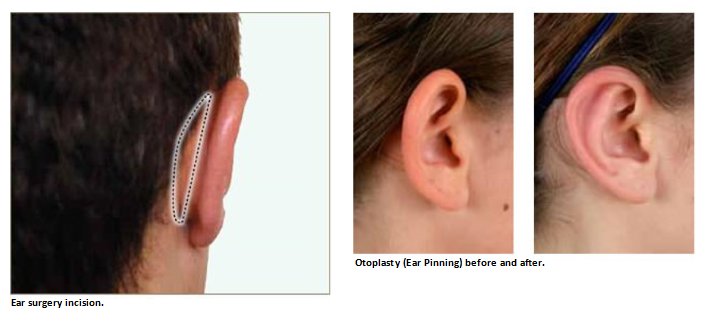Cosmetic Ear Surgery
Understanding Otoplasty
Probably no other physical characteristic cries out for facial plastic surgery more than protruding ears. Children, long the victims of cruel nicknames like “Dumbo” or “Mickey Mouse,” are the most likely candidates for otoplasty, but this surgery can be performed at any age after the ears have reached full size, usually around five to six years of age. Even if the ears are only mildly distorted, the condition can lead to self-consciousness and poor adaptation to school. It is often desirable in children to consider this surgery before they start Kindergarten or first grade.
My ears always stuck out, one more than the other. Growing up, I was very self-conscious. I never wore my hair in a pony tail. It was awful when I went swimming because when my hair got wet, my ears would stick through it. I hated the way they looked. Now that I’ve had surgery, I definitely feel better about my appearance.
– joannej., age 43
Understanding the Surgery
Surgery begins with an incision just behind the ear in the natural fold where the ear is joined to the head. The surgeon will then remove the necessary amounts of cartilage and skin required to achieve the right effect. In some cases, the surgeon will trim the cartilage, shaping it into a more desirable form and then pin the cartilage back with sutures to secure the cartilage.
In other instances, the surgeon will not remove any cartilage at all, using stitches to hold the cartilage permanently in place. After sculpting the cartilage to the desired shape, the surgeon will apply sutures to anchor the ear until healing occurs to hold the ear in the desired position.
A change in shape will not affect hearing. Although the ears’ folds and convolutions do serve to concentrate and localize sound waves, routine surgery to pin back or reshape ears will not produce a noticeable change in hearing.

What to Expect After the Surgery
Soft dressings applied to the ears will remain for a few days. Most patients experience some mild discomfort. If you are accustomed to sleeping on your side, your sleep patterns may be disrupted for a week or so because you cannot put any pressure on the ear areas. Headbands are sometimes recommended to hold the ears in the desired position for two weeks after surgery.
The risks are fairly minimal but include very rare infections, poor healing or possibility of recurrence of the deformity. Normally, there will only be a thin white scar behind the ear after healing. Because this scar is in a natural crease behind the ear, the problem of visibility is usually inconsequential. Anything unusual should be reported to the surgeon immediately.
Facial plastic surgery makes it possible to correct many facial flaws that can often undermine one’s self-confidence. By changing how you look, cosmetic surgery can help change how you feel about yourself. Insurance does not generally cover surgery that is purely for cosmetic reasons. Surgery to correct or improve birth defects or traumatic injuries may be reimbursable in whole or in part. It is the patient’s responsibility to check with the insurance carrier for information on the degree of coverage.
Ear surgery can offer a real emotional boost, in addition to its cosmetic benefits.